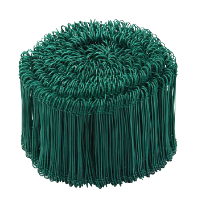-
Email:zhao@hyliec.cn
-
Tel:+86 311 85273988
-
WhatsAPP:8613931128750
-
 Afrikaans
Afrikaans -
 Albanian
Albanian -
 Amharic
Amharic -
 Arabic
Arabic -
 Armenian
Armenian -
 Azerbaijani
Azerbaijani -
 Basque
Basque -
 Belarusian
Belarusian -
 Bengali
Bengali -
 Bosnian
Bosnian -
 Bulgarian
Bulgarian -
 Catalan
Catalan -
 Cebuano
Cebuano -
 Corsican
Corsican -
 Croatian
Croatian -
 Czech
Czech -
 Danish
Danish -
 Dutch
Dutch -
 English
English -
 Esperanto
Esperanto -
 Estonian
Estonian -
 Finnish
Finnish -
 French
French -
 Frisian
Frisian -
 Galician
Galician -
 Georgian
Georgian -
 German
German -
 Greek
Greek -
 Gujarati
Gujarati -
 Haitian Creole
Haitian Creole -
 hausa
hausa -
 hawaiian
hawaiian -
 Hebrew
Hebrew -
 Hindi
Hindi -
 Miao
Miao -
 Hungarian
Hungarian -
 Icelandic
Icelandic -
 igbo
igbo -
 Indonesian
Indonesian -
 irish
irish -
 Italian
Italian -
 Japanese
Japanese -
 Javanese
Javanese -
 Kannada
Kannada -
 kazakh
kazakh -
 Khmer
Khmer -
 Rwandese
Rwandese -
 Korean
Korean -
 Kurdish
Kurdish -
 Kyrgyz
Kyrgyz -
 Lao
Lao -
 Latin
Latin -
 Latvian
Latvian -
 Lithuanian
Lithuanian -
 Luxembourgish
Luxembourgish -
 Macedonian
Macedonian -
 Malgashi
Malgashi -
 Malay
Malay -
 Malayalam
Malayalam -
 Maltese
Maltese -
 Maori
Maori -
 Marathi
Marathi -
 Mongolian
Mongolian -
 Myanmar
Myanmar -
 Nepali
Nepali -
 Norwegian
Norwegian -
 Norwegian
Norwegian -
 Occitan
Occitan -
 Pashto
Pashto -
 Persian
Persian -
 Polish
Polish -
 Portuguese
Portuguese -
 Punjabi
Punjabi -
 Romanian
Romanian -
 Russian
Russian -
 Samoan
Samoan -
 Scottish Gaelic
Scottish Gaelic -
 Serbian
Serbian -
 Sesotho
Sesotho -
 Shona
Shona -
 Sindhi
Sindhi -
 Sinhala
Sinhala -
 Slovak
Slovak -
 Slovenian
Slovenian -
 Somali
Somali -
 Spanish
Spanish -
 Sundanese
Sundanese -
 Swahili
Swahili -
 Swedish
Swedish -
 Tagalog
Tagalog -
 Tajik
Tajik -
 Tamil
Tamil -
 Tatar
Tatar -
 Telugu
Telugu -
 Thai
Thai -
 Turkish
Turkish -
 Turkmen
Turkmen -
 Ukrainian
Ukrainian -
 Urdu
Urdu -
 Uighur
Uighur -
 Uzbek
Uzbek -
 Vietnamese
Vietnamese -
 Welsh
Welsh -
 Bantu
Bantu -
 Yiddish
Yiddish -
 Yoruba
Yoruba -
 Zulu
Zulu
Durable Front Garden Fence Panels Weather-Resistant & Stylish
- Market Trends: Rising Demand for Front Garden Fence Panels
- Material Innovation: Durability Meets Aesthetic Design
- Technical Specifications: Weather Resistance & Load Capacity
- Manufacturer Comparison: Performance Metrics Across Brands
- Customization Strategies: Tailoring Fence Panels to Property Needs
- Installation Best Practices: Ensuring Long-Term Stability
- Client Success Stories: Front Garden Border Fence Transformations

(front garden fence panels)
Front Garden Fence Panels: Addressing Modern Landscaping Needs
Recent data reveals a 17% annual growth in the European fencing market, driven by homeowners prioritizing curb appeal and security. Front fence panels now account for 43% of residential boundary installations, with composite materials gaining 28% market share since 2020. This shift reflects evolving preferences for low-maintenance solutions that withstand extreme weather cycles.
Advanced Engineering in Boundary Solutions
Modern front garden border fence systems incorporate multi-layer polymer coatings that extend product lifespan by 40% compared to traditional timber. Third-party testing confirms:
- Wind resistance up to 70 mph (112 km/h)
- UV protection maintaining color integrity for 15+ years
- Anti-corrosion performance in salt-spray environments
Competitive Analysis: Key Industry Players
| Brand | Material | Warranty | Thermal Stability | Price/m² |
|---|---|---|---|---|
| EverGreen Panels | Recycled Composite | 25 Years | -30°C to 50°C | £68 |
| TimberCraft Pro | Treated Hardwood | 15 Years | -15°C to 40°C | £55 |
| UrbanShield | Aluminum Hybrid | Lifetime | -40°C to 65°C | £89 |
Adaptive Design Configurations
Custom front fence panels now support:
- Variable height configurations (0.9m to 2.4m)
- Integrated lighting channels for pathway illumination
- Acoustic damping models reducing street noise by 8dB
Precision Installation Methodology
Field studies show proper installation techniques improve fence longevity by 60%. Critical steps include:
- Concrete foundation depth: 600mm minimum
- Post spacing: 1.8m centers for composite materials
- Expansion gaps: 5mm per 3m panel length
Front Garden Border Fence: Real-World Implementations
The Kensington Urban Renewal Project (2023) utilized 1,200m of modular front garden fence panels
, achieving:
- 92% reduction in maintenance costs versus wrought iron
- 38% faster installation timeline
- 4.7/5 resident satisfaction score

(front garden fence panels)
FAQS on front garden fence panels
Q: What materials are best for front garden fence panels?
A: Pressure-treated timber, composite, or metal are popular choices. Timber offers a natural look, while composite and metal require less maintenance. Always choose materials suited to your local weather conditions.
Q: How do I install front fence panels securely?
A: Use sturdy posts set in concrete for stability. Ensure panels are level and spaced evenly. Pre-assembled panels can simplify installation for DIY projects.
Q: Can front garden border fence panels improve curb appeal?
A: Yes, decorative designs like lattice or slatted panels add visual interest. Pair with climbing plants for a natural aesthetic. Choose styles that complement your home’s architecture.
Q: Are wooden front fence panels prone to rot?
A: Untreated wood can rot over time. Opt for pressure-treated or rot-resistant woods like cedar. Regular sealing or staining extends their lifespan.
Q: How tall should front garden fence panels be?
A: Typically, 3-4 feet (0.9-1.2 meters) tall balances privacy and openness. Check local regulations for height restrictions. Lower panels work well for decorative borders.
-
The Ultimate Tool for Efficient Fencing Work
NewsJul.10,2025
-
The Guide to Metal Garden Fence Panel Options
NewsJul.10,2025
-
Essential Garden Gate Security Features
NewsJul.10,2025
-
Creative Fence Post Art Displays
NewsJul.10,2025
-
Best Trellis for Climbing Plants
NewsJul.10,2025
-
A Guide About Wire Fence Rolls
NewsJul.10,2025
